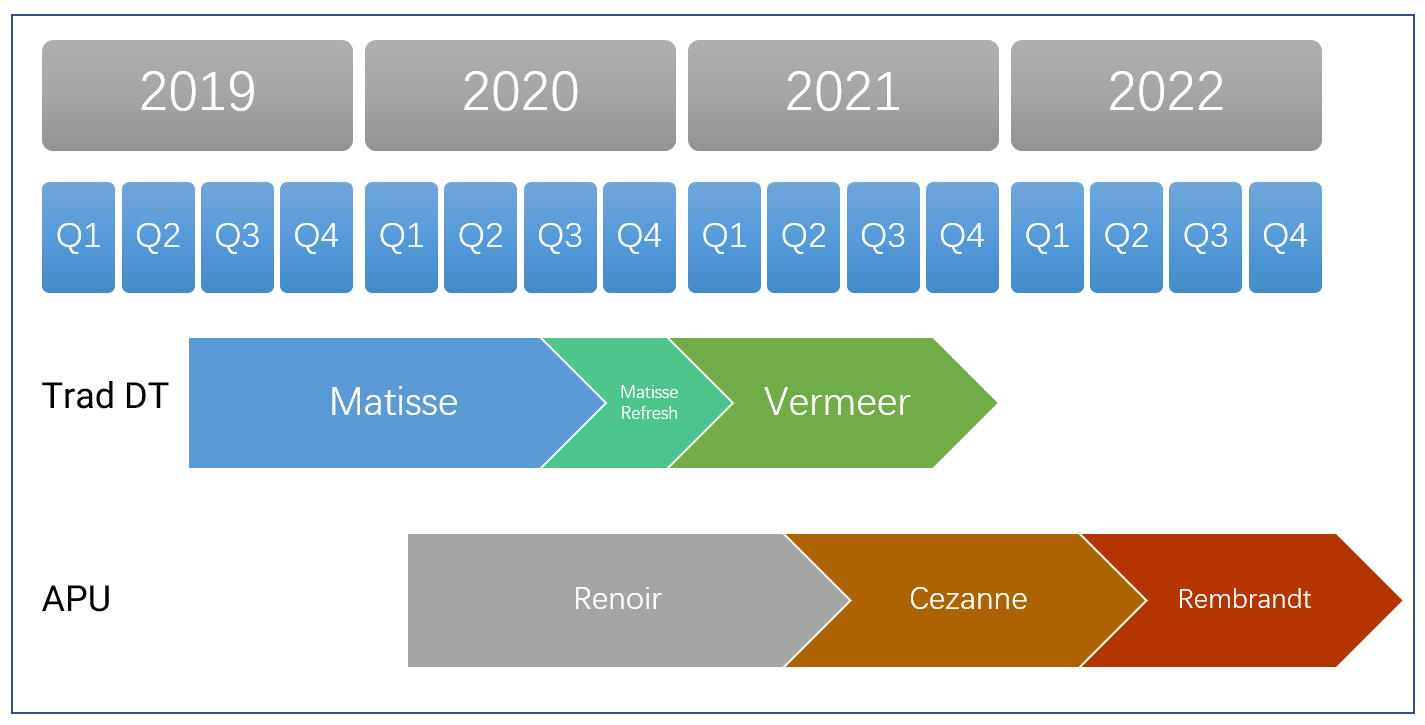AMD side: Zen 3 and various APUs
AMD's new products are still relatively clear. The product they are about to release soon should be Matisse Refresh, which is an upgraded version of the frequency of several currently selling Zen 2 processors. It is believed that they will have the XT model suffix. Then there is the desktop version of the Renoir processor, which may debut with Matisse Refresh, or it may be launched at some point later.
The above two series do not exist in AMD's official information. The only available information is the Zen 3 architecture and the schedule of the new generation of processors. It can be seen that AMD will launch a new generation of processors based on Zen 3 this year. Code-named Vermeer, what can be learned from various channels is that Zen 3's single-threaded performance will be improved by double-digit levels, which means that it will definitely not be as simple as changing the CCX structure, and the kernel micro-architecture will also have Larger upgrade.
Let's talk about AMD's layout in the mobile market. A few days ago, there is a form of integration of AMD ’s future processor roadmap. Let ’s take a look. The data comes from @KOMACHI_ENSAKA:
What is more useful to us in this form is the layout on MSDT and APU next year. You can see that AMD has laid out an APU called Cezanne next year, and then there is a new APU codenamed Rembrandt, but the table does not mark them. What kind of architecture will be used, but we got the latest news from anonymous sources.
Cezanne will use a combination of Zen 3 + Vega 7 instead of the rumored RDNA 2, and it will continue to use TSMC's N7 process. Like Renoir, it will have both low-voltage and standard-pressure versions. Rembrandt is a huge update. The CPU architecture will use Zen 3+, and the GPU will finally get rid of the Vega architecture and switch to RDNA 2. In terms of process, it will be updated to TSMC's 6nm, which is the optimized version of the N7 process. And will support DDR5, LPDDR5, in addition, USB4 and PCIe 4.0 two new buses will also be available on this generation of architecture.
AMD is also planning a processor called Van Gogh (Van Gogh) at ultra-low voltage. It is like a simplified version of the PS5 and Xbox Series X custom processors. It also uses the Zen 2 + RDNA 2 architecture, but TDP restrictions At 9W, for thin and light mobile devices.
If you use a road map to simply represent the layout of AMD on the desktop CPU and APU, this can be the case, but there is no guarantee that the time point will be correct.
Summary: CPU market changes
In the CPU market in the next two years, if nothing unexpected happens, Intel will experience a period of relatively weak, they are seriously dragged down by the process technology, they decided too late to put the new core on the desktop processor, resulting in their own desktop The processor has begun to dominate at the same frequency. How much Rocket Lake-S can recover is still unknown. In the mobile market, it is still a mystery whether Tiger Lake and the optimized 10nm + process can make the energy consumption better. The implementation of the roadmap by AMD is still relatively good. At the end of this year, we should see the Zen 3 processor. With the success of Renoir, more manufacturers will choose to use it in the mobile market next year. APU.



